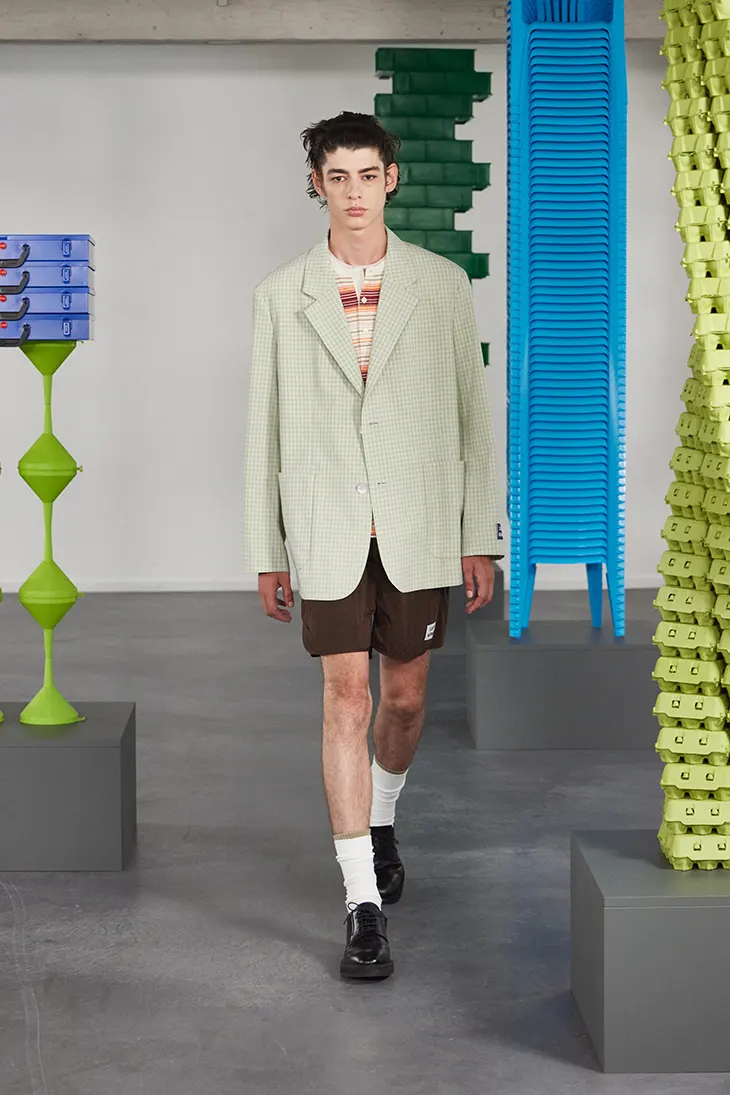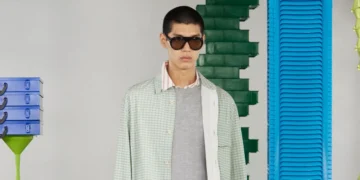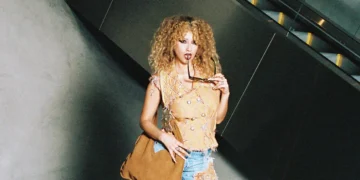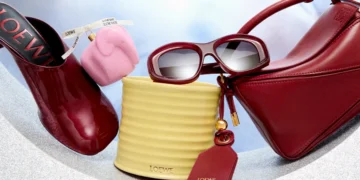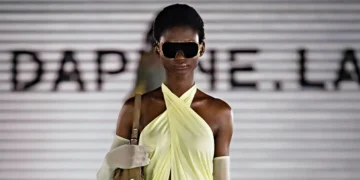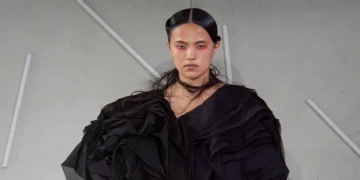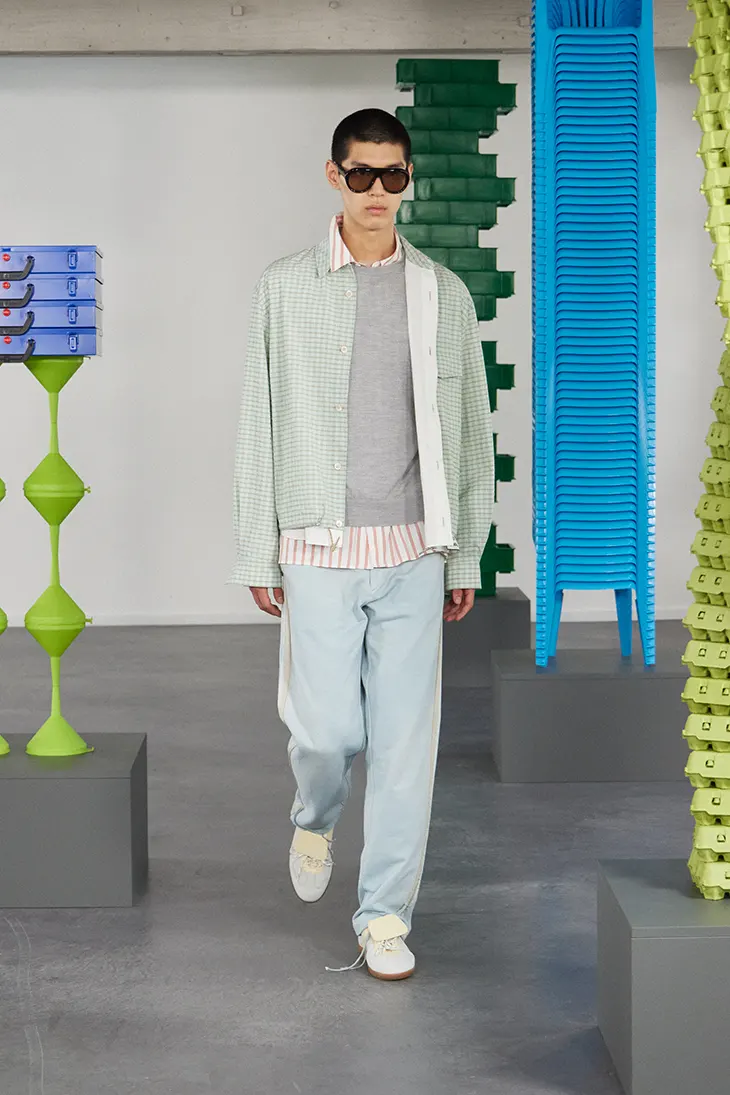
Solid Homme approaches SS26 by examining the impulse to collect. Rather than reaching outward, the collection turns inward, drawing from the emotional residue of nostalgia while staying firmly in the present. Objects, garments, and gestures appear as markers of time and experience, quiet records of encounters that shape identity. The clothes behave less as garments and more as personal archives, worn as extensions of memory.
Layering operates as a guiding principle throughout the collection. Rugby shirts and dress shirts stack their collars one atop the other, while knits fall into place instinctively, one over another without force. Sheer coats slide over jackets, forming a tension between exposure and cover. Solid Homme uses this act of layering as both an aesthetic tool and an instinctual gesture, something closer to habit than fashion.
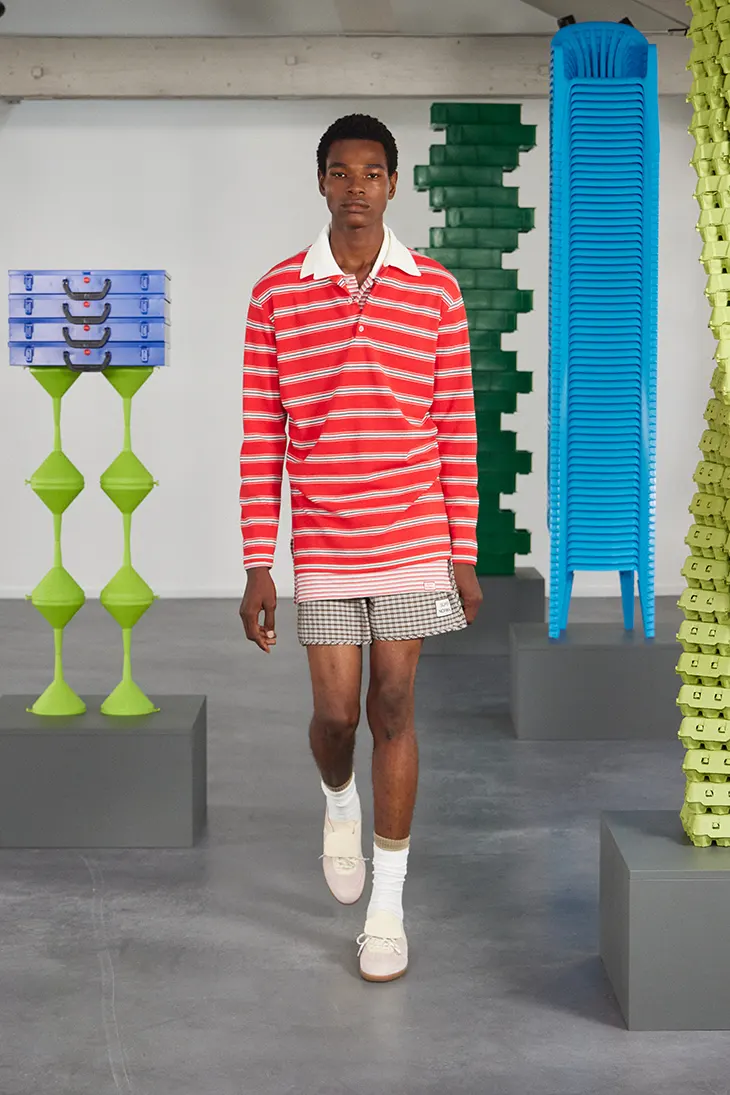
The collection elevates common references. Coffee pots, bottle openers, and irons no longer serve their original purpose; instead, they become leather charms, keepsakes worn rather than used. These transformed objects mirror the stitched-on tags reading “Super Normal,” placed on shirts, shorts, and jackets. The phrase offers a clue to the collection’s intent: to find expression in the familiar. Solid Homme leans into quiet ease with softly structured silhouettes, a striped boat neck layered over a henley, a merino knit half-covered by an open cardigan, a rugby shirt ruched up to expose another layer of stripes underneath.
Gingham prints bring forward echoes of childhood, now rendered in technical fabrics that move with intention. Tracksuit bottoms and soccer shirts draw from the same archive of references, revisiting garments worn not for style but for comfort and ritual. Tailored shorts and a bomber jacket, its lining hanging visibly outside, continue this investigation.
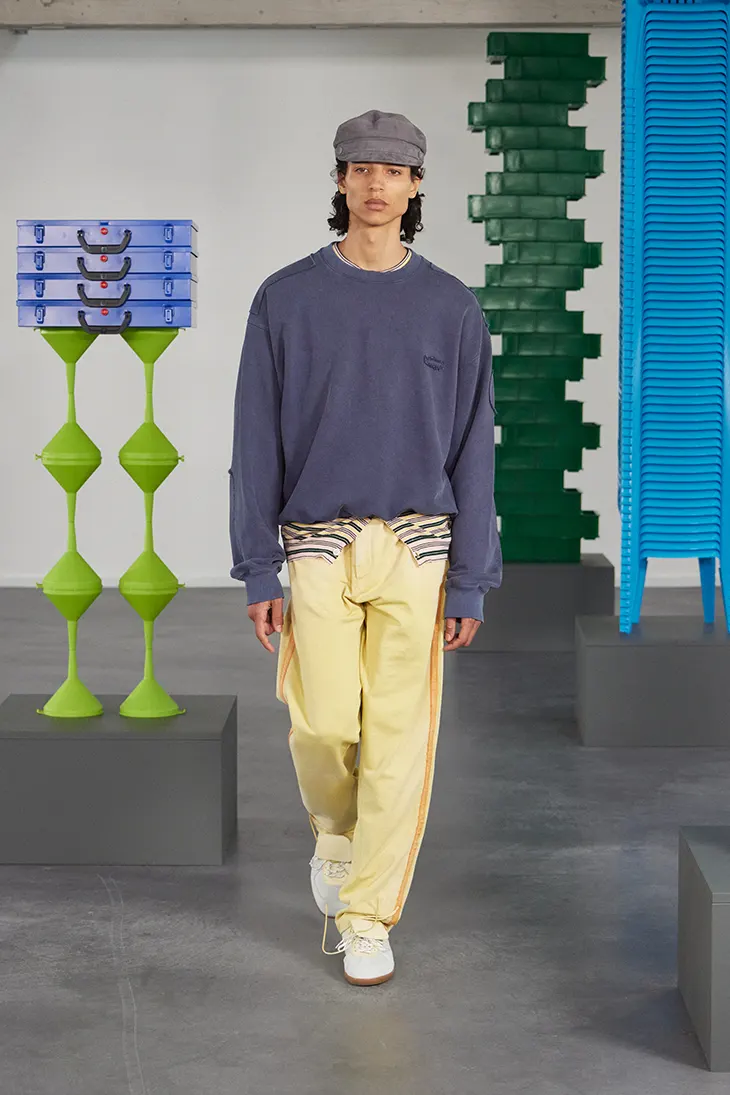
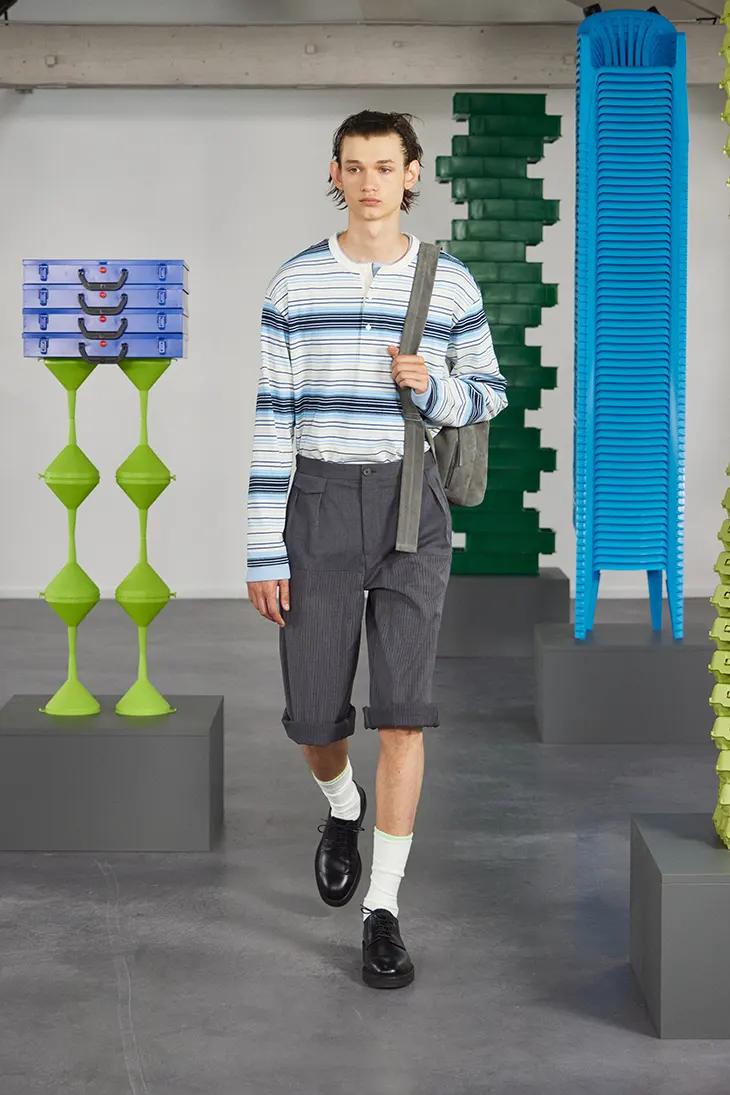
The collection doesn’t rely on accessories for decoration but uses them to extend the rhythm of the clothing. Bowling bags in nylon and suede, neck scarves, and beatnik-style hats appear repeatedly, not for contrast, but for consistency. They carry the same sensibility as the garments: practical, worn, chosen.
Color sets the emotional tone. Deep iron hues soften when translated through washed silks. Pale yellow and gentle pink add lift without force. Brighter tones, grass, indigo, volcano red, appear in patterned mixes, not as accents but as parts of the system. The use of classic cotton stripes in white and blue introduces structure, even as they break from their original codes.
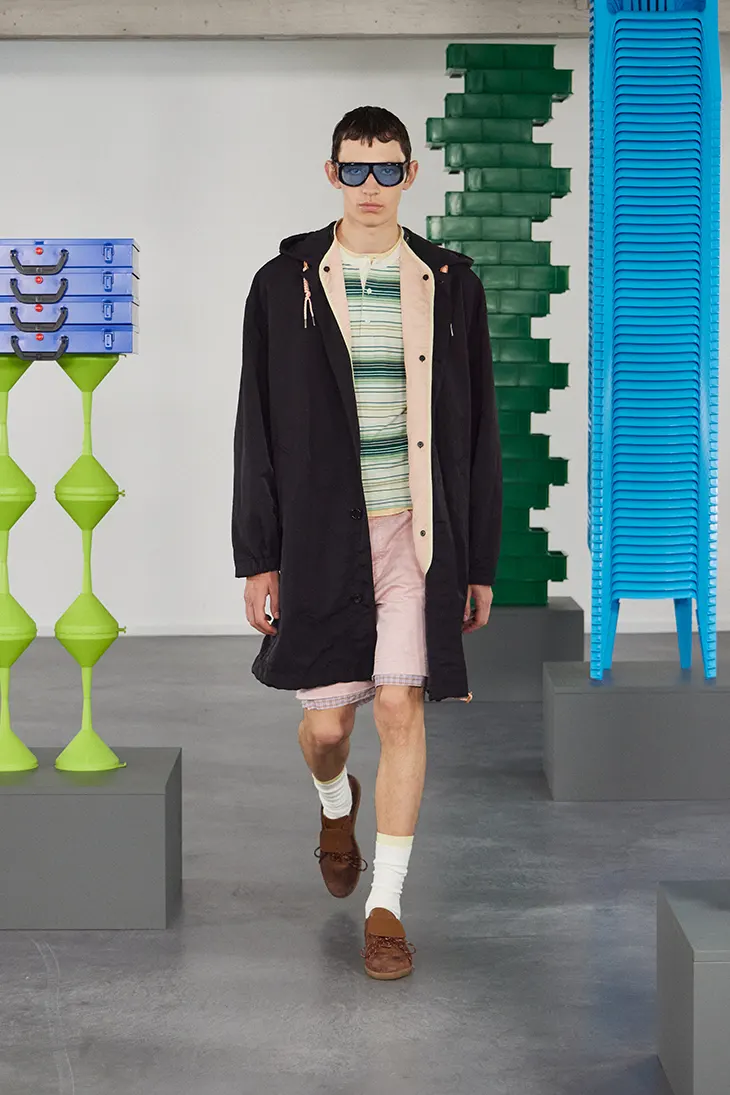
The collection doesn’t search for grand narratives or exaggerated silhouettes. It roots itself in repetition, gesture, and quiet choices. The characters perform everyday tasks. They wear what they carry and carry what they’ve worn.
